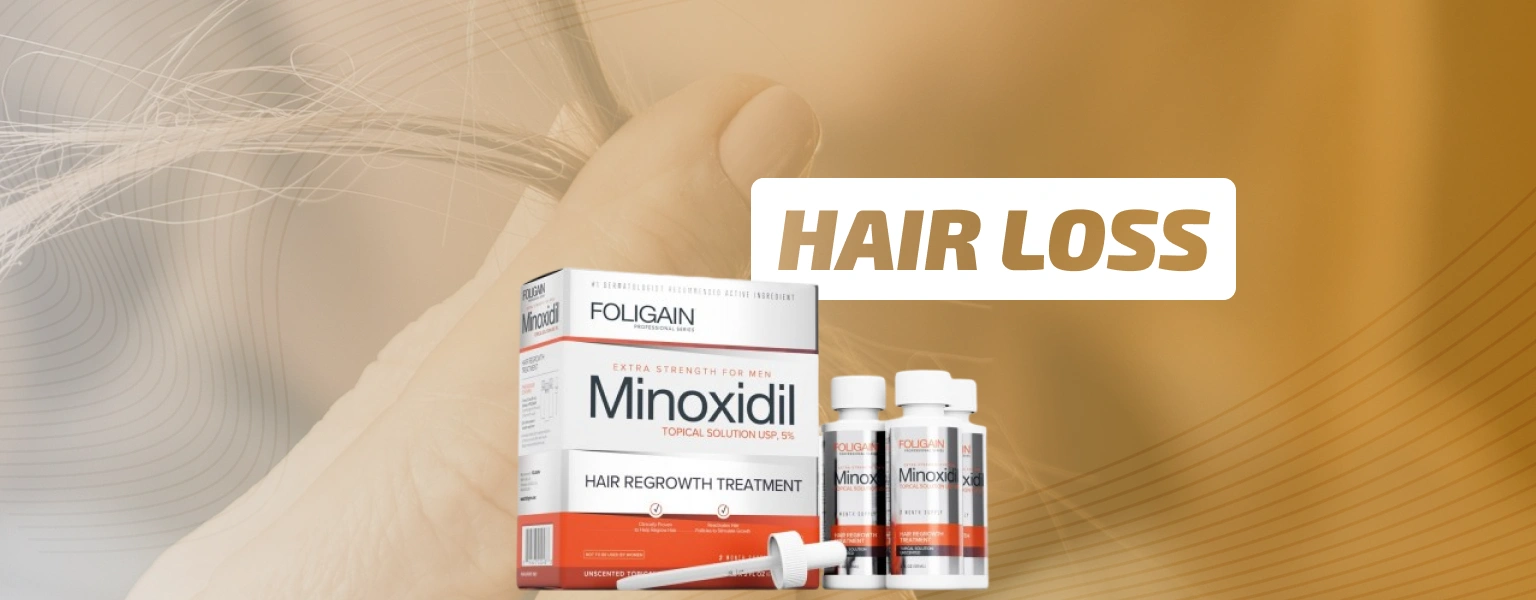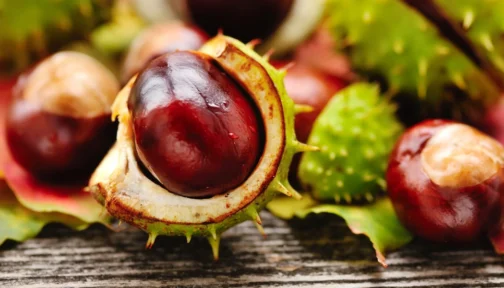Seasonal hair loss is a common phenomenon that affects both women and men, most often in the fall and spring. During this period, it is possible to observe significantly increased hair thinning and more hairs on the brush after combing.
The causes usually lie in the natural hair growth cycle, climate changes and some physiological factors. Although it may seem disturbing, seasonal hair loss is often a temporary condition that can be managed. With proper care, the condition can be controlled and the structure and density of the hair can be effectively restored.
However, if not addressed in time and in the presence of hormonal imbalance, stress and other factors, the problem can develop into a more prolonged or chronic form. Excessive hair loss weakens the follicles and disrupts the natural balance of the scalp. This creates conditions for the appearance of thinning areas, slowed growth and even permanent thinning. The lack of proper care during this period increases the risk of more serious problems with the hair coat in the future.
Causes of seasonal hair loss
Seasonal hair loss is influenced by various external and internal factors that affect the normal hair growth cycle. At certain times of the year, especially spring and autumn, the body reacts to changes in the environment, which often leads to increased hair loss. Understanding the underlying causes is key to proper prevention and effective care.
Main factors that contribute to seasonal hair loss:
Climate change – the transition between seasons leads to fluctuations in temperature and humidity, which adversely affect the scalp and hair structure.
Reduced sunlight – shorter days and less sun exposure lead to a drop in vitamin D levels, which is important for the health of hair follicles.
Hormonal imbalance – seasonal changes can affect hormonal activity, especially melatonin and prolactin, which affects the growth cycle.
Physiological stress on the body – transitions between seasons are associated with adaptation of the immune and nervous systems, which can temporarily suppress hair growth.
Malnutrition – the deficiency of key vitamins and minerals, typical of late winter or autumn, weakens the structure and vitality of the hair.
Hereditary predisposition – some people have a higher sensitivity of hair follicles to seasonal influences, which is inherited.
How long does seasonal hair loss last?
Seasonal hair loss usually lasts between 4 and 6 weeks, and in some cases it can last up to 2–3 months. The duration depends on individual physiology, health status and the body's ability to adapt to seasonal changes. The main reason for this type of hair loss is the transition of a large number of hair follicles into the telogen phase (resting phase), after which natural shedding occurs. After the end of this cycle, a new anagen phase (growth) begins, in which new hairs are formed.
Factors such as stress, hormonal fluctuations, vitamin deficiencies, a weakened immune system or improper scalp care can prolong the period of increased hair loss. Restoring normal growth depends on timely response, balanced nutrition and the application of appropriate cosmetic or therapeutic care.
Seasonal hair loss – women
In women, seasonal hair loss may be more noticeable, as the density and appearance of hair are more often related to a woman's personal aesthetics. The hormonal sensitivity of the female body, more intense cyclical changes, and increased susceptibility to nutritional deficiencies make women more vulnerable to increased hair loss during certain seasons.
Specific risks in women include:
– Hormonal fluctuations – menstrual cycle, pregnancy, childbirth, breastfeeding or perimenopause can intensify natural seasonal hair loss and prolong its duration.
– Iron and vitamin deficiency – women more often suffer from deficiencies of iron, B vitamins, and vitamin D, which are crucial for hair strength and growth.
– Frequent use of styling treatments – dyeing, lightening, heat treatment and tight hairstyles lead to depletion of the hair structure and make it more susceptible to seasonal hair loss.
– Stronger reaction to stress – chronic or seasonal stress in women often activates mechanisms leading to telogen effluvium: temporary but visible hair thinning.
To limit the negative impact of seasonal hair loss, a comprehensive approach is needed - hormonal control, a healthy diet, and gentle cosmetic care tailored to the needs of the female scalp.
Seasonal hair loss – men
In men, seasonal hair loss is often underestimated, as it is usually perceived as part of the natural balding process. However, increased hair loss during certain periods of the year should not be ignored, especially when combined with a hereditary predisposition to androgenic alopecia. The male body also reacts to seasonal changes, and prolonged or intense thinning can accelerate permanent hair loss if timely measures are not taken.
Specific risks for men include:
Genetic predisposition – in men who have a hereditary tendency to baldness, seasonal hair loss can trigger the onset of permanent thinning earlier.
Increased sensitivity to androgens – the hormones responsible for male sexual characteristics have a strong influence on hair follicles and can intensify the effect of seasonal hair loss.
Inadequate scalp care – men often underestimate the need for targeted care, which makes the scalp more susceptible to dryness, irritation, and slowed growth of new hair.
Low sun exposure and vitamin deficiency – reduced availability of vitamin D in autumn and winter leads to weakened follicular activity, especially in men with oilier or sensitive scalps.
Active monitoring of the condition and timely implementation of nutritional therapy, combined with a balanced lifestyle, can significantly reduce the risk of progressive hair loss in men during periods of seasonal hair loss.
Diet and supplements
Nutrition plays a key role in hair health, especially during seasonal hair loss. A deficiency in certain nutrients can accelerate hair loss and make it difficult to regrow hair. To maintain strong and vibrant hair, it is important to eat a diet rich in vitamins, minerals, and proteins that nourish the follicles and promote growth.
Foods rich in iron, zinc, B vitamins (especially B7 – biotin), vitamin D, vitamin E and omega-3 fatty acids are particularly beneficial. In case of proven deficiency or increased need, nutritional supplements formulated for hair, skin and nails or supplements for hair loss can be taken. It is recommended that they be selected after consulting a dermatologist.
Specialized supplements for hair loss usually contain a combination of biotin, zinc, selenium, vitamins B6, B12, D3, folic acid, L-cystine, L-methionine, collagen, as well as plant extracts - such as horsetail, nettle or millet. These ingredients support cell regeneration, increase blood circulation in the scalp, strengthen the hair structure and stimulate follicle activity.
The recommended duration of use varies between 2 and 6 months, depending on the condition and composition of the product. For optimal effect, it is good to combine the supplements with a balanced diet and appropriate local therapy. Consultation with a doctor or dermatologist is recommended in case of prolonged use or the presence of concomitant health conditions.
Preparations for seasonal hair loss
The use of specialized products is an important part of seasonal hair loss care. They help strengthen hair, stimulate growth and restore scalp health. The most commonly used are ampoules, serums, tonics and medicated shampoos, which act directly on the hair follicles and activate microcirculation.
Preparations with caffeine and niacinamide – stimulate blood circulation to the scalp and provide more oxygen and nutrients for the active growth phase.
Shampoos with anti-inflammatory and antifungal components (e.g. ketoconazole) – maintain a clean and healthy scalp environment, reduce irritation and control oiliness.
Formulas with biotin, copper peptides and pea extract – biotin supports keratin synthesis and strengthens the hair structure, copper peptides stimulate follicle regeneration and extend the growth phase, and pea extract is rich in phytonutrients that activate “dormant” follicles and improve hair density.
Products with jojoba oil – provide deep hydration of the scalp, regulate sebum and create a protective film that protects the hair structure from drying out and external aggressors.
Formulas with the patented ingredient Trioxidil – this innovative combination of extracts and trace elements is designed for a triple action: stimulating microcirculation, protecting the hair structure and limiting factors leading to thinning.
Minoxidil (in appropriate cases) – although it is better known as a remedy for chronic hair loss, in some cases it is also used to enhance growth and for seasonal hair loss, but it is not considered a standard therapy for this specific problem. It is recommended only for pronounced and prolonged hair loss, when concomitant androgenic alopecia is suspected, or when seasonal hair loss develops into telogen effluvium.
Comprehensive care for healthy and vibrant hair
Seasonal hair loss is a natural process that can be controlled with proper care, a balanced diet and timely action. The combination of a complete diet, appropriate products and, if necessary, complementary therapy creates a solid foundation for hair restoration. Regular monitoring of the condition and consultations with a specialist are key to maintaining the density and health of hair during each season.


 0878 567 491
0878 567 491






